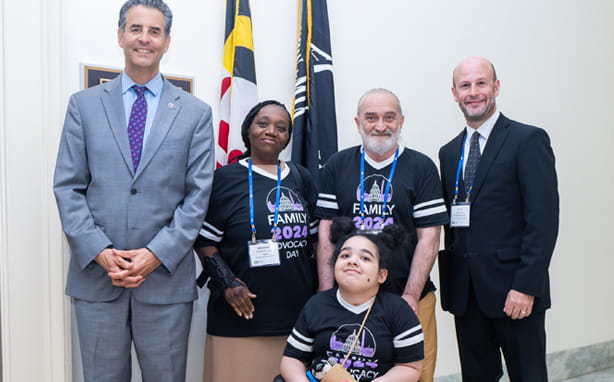The Life-Saving Potential of High-Cost Therapies
High-Cost Therapies (HCTs) represent a revolutionary advancement in pediatric care, offering hope to children and families affected by chronic, rare, and complex conditions. Many of these therapies have the potential to not only save lives but also reduce and/or eliminate the need for lifelong, costly chronic care, improving long-term health outcomes for pediatric patients. By targeting unmet medical needs, HCTs can address gaps in care and health disparities, offering life-changing treatments and potential cures for complex and rare conditions once deemed untreatable. These treatments also often come with expensive price tags, exceeding one million dollars, and require advanced education, special handling, and close oversight from pediatric specialists.
Children’s hospitals: At the forefront of innovation
Children’s hospitals are at the forefront of developing and leading clinical trials of HCTs and novel clinical programs to safely implement HCTs for optimal clinical outcomes. Many are actively involved in leading clinical trials and implementing specialized, multidisciplinary centers to ensure HCTs are delivered safely, effectively, and quickly from the lab to the bedside.
Children’s hospitals have already developed innovative pediatric clinical trials for various HCTs, including treatments for inherited retinal disease, spinal muscular atrophy (SMA), and leukemia.
High-cost therapy pipeline and approved therapeutics
There has been a significant focus on pediatric HCTs, with a substantial proportion of both approved therapies and those still in development. These treatments are often most effective when administered early, underscoring the need for timely access. Since 2017, 38 HCTs have been approved, with 21 specifically targeting pediatric conditions. Looking ahead, the pipeline remains robust, and this trend highlights the ongoing expansion and prioritization of pediatric-focused HCTs, ensuring that future innovations continue to address the pressing needs of children.
Barriers to accessing high-cost therapies
Despite the promise of HCTs, children’s hospitals face significant challenges in ensuring long-term access including unpredictable and inadequate reimbursement, patients crossing state lines to access care, time-consuming administrative processes, and clinical burdens. Further, the rarity of diseases they treat, small patient populations, and high cost of treatment, create a perception of limited profitability for developers, impacting the commercial availability of these therapies. However, the reality is that many of these treatments and therapies will have a significant and life-changing impact on children's lives including the possibility of futures they never before imagined.
Reimbursement
One of the most pressing challenges is reimbursement. Providers often face substantial and unsustainable financial risks, with reimbursement models failing to account for the time and resources required to safely deliver these therapies. Neither public nor private payors are incentivized to cover these groundbreaking HCTs or to develop formal strategies to support patient access. Children’s hospitals must navigate time-consuming single-case agreements, prior authorizations with significant documentation, peer-to-peer reviews, and multiple appeals to secure coverage for each patient, and the risk of denial is high, leading to potential delays in care.
Because more than half of U.S. children rely on Medicaid for coverage, including many children with rare conditions, disabilities, or medical complexities, children’s hospitals struggle with inadequate reimbursement. High price tags and up-front payment at time of administration, create logistical and budgetary hurdles for state Medicaid programs and for providers. Differences in coverage criteria from payor to payor create additional challenges for patients and providers that are not always easily understood.
Medicaid coverage for HCTs require specialists to participate as providers in the patient’s home state but many children often travel long distances and across state lines to receive care at a children’s hospital with the specific expertise needed, causing many providers to participate in multiple state programs. The enrollment process for providers in out-of-state Medicaid programs can be time-consuming and challenging.
While there is a robust pipeline of HCTs in development, often children aren’t a study focus, leaving a lack of FDA-approved pediatric treatments. This forces hospitals to rely on off-label use of adult medications, a practice fraught with challenges and risks. Even when therapies are FDA-approved, obtaining coverage remains a hurdle, as many payors continue to deny claims due to the high costs. As a result, children's hospitals often undertake the time-consuming and costly responsibility of conducting their own clinical research to ensure safety and efficacy. However, payors don’t cover the costs of these clinical trials, making it financially unsustainable to ensure access to these critical therapies for ultra-rare diseases. Without adequate financial support, children’s hospitals struggle to maintain the necessary resources to provide these life-saving treatments, potentially further limiting access for impacted children.
Payors may also require children’s hospitals to access certain HCTs through the pharmacy benefit rather than the medical benefit, even when administered in an inpatient setting. This can be inconsistent with billing requirements and applicable pharmacy regulations through forced “white bagging.” White bagging requires the drugs to be dispensed by an outside pharmacy with final preparation and administration occurring within children’s hospitals. The hospital is ultimately responsible for product storage (frequently requiring specialized equipment), final drug product dispensing, patient/family education, and administration, all risks for which there is no reimbursement. Additionally, forced white bagging can create an obstacle to care, often inserting a middleman, complicating an already very complex care situation. This can result in negative impact to patients and families.
Access to care
Children and families who live in rural areas and/or underserved populations may face significant barriers in accessing a needed therapy. Beyond the burden of travel, many children accessing these therapies are on Medicaid and may encounter additional social determinants of health (SDOH) challenges, such as lack of transportation, single parent living situations, and poverty. These barriers make it critical to invest in navigators, other family support, and hospital investments.
HCTs frequently require inpatient stays at a minimum of 41 days, as bone marrow transplants are often part of the therapy. Adverse effects from this procedure can prolong the process, creating further challenges for patients and families seeking care away from home.
Many of the emerging HCTs are time sensitive and most effective when administered early, before the onset of symptoms or irreversible damage. Thus, HCTs may require expedited administration to prevent irreversible disease progression or meet payor coverage requirements. For example, one drug is safer and more effective when given to children before age 2 since the disease progresses rapidly in untreated infants, while other therapies require administration by a certain age.
Administrative burden
The pediatric workforce faces increasing strain from the administrative burdens tied to reimbursement negotiations with payors. Children’s hospitals have had to hire additional staff to manage approvals and acquisitions for HCTs, often spending hours navigating complex prior authorization processes and submitting multiple appeals for each patient.
Senior executives, including Chief Financial and Pharmacy Officers, are regularly involved in routine HCT orders because of the complexity and financial impact on the hospital, adding to the costs of delivering these therapies. Even after completing these time-intensive processes, there’s a risk that a child may become ineligible for treatment, potentially resulting in a missed opportunity for life-saving care despite significant hospital efforts.
Clinical burden
HCTs require specialized storage, preparation, and administration protocols to ensure their safety and effectiveness. Improper storage and handling can result in product loss and financial setbacks for hospitals. Children’s hospitals must invest in costly infrastructure and protocols, including ultra-low temperature freezers, cell and gene therapy clean rooms, unique delivery methods to maintain product stability, and specialized clinical certifications with ongoing training. These complex protocols add to the time and resources required to deliver HCTs safely. It is interesting to note that these expenses must all be incurred, even if the hospital is forced to white bag these therapies, with no reimbursement.
The road ahead: Policy solutions and collaboration
Ensuring sustainable access requires a commitment to developing equitable reimbursement models, streamlining administrative processes, and supporting the unique needs of pediatric patients.
HCTs represent a transformative advancement in medical care, offering hope to children and families with previously untreatable conditions. Financial and systemic challenges associated with HCTs must be addressed with solutions that ensure sustainable access, equity, and support the long-term viability of our health care system and health of the vulnerable patients we serve.
CHA has convened a multidisciplinary workgroup focused on the unique needs and challenges of children and pediatric health care providers and is working to develop policy solutions that can help to support equitable access to HCTs. It is critical that policymakers work with children’s hospitals on how best to explore appropriate mechanisms to balance investments in research and development, manufacturing, and distribution structures for HCTs. Children’s hospitals stand ready to share HCT expertise and ensure pediatric patients receive miraculous treatments in a safe and equitable manner.
With continued innovation and advocacy, we can ensure that HCTs are not only available but accessible to every child who needs them.
Learn more about HCTs and the unique role of children's hospitals.
Contact Us
Children's Hospital Association Blog
Find expert insights and perspectives on issues important to children's hospitals and child health on CHA's official blog.
Related Content
10 Surprising Facts About Medicaid
Learn why Medicaid is a vital resource for more than 37 million children in the U.S.
5 Ways Child Life Specialists Make an Impact
March is a time to celebrate child life professionals and the impact they have on children and their families.
10 Reasons to Attend Family Advocacy Day
Join us as we celebrate 20 years of giving pediatric patients and families a powerful way to share their journeys with federal lawmakers.





